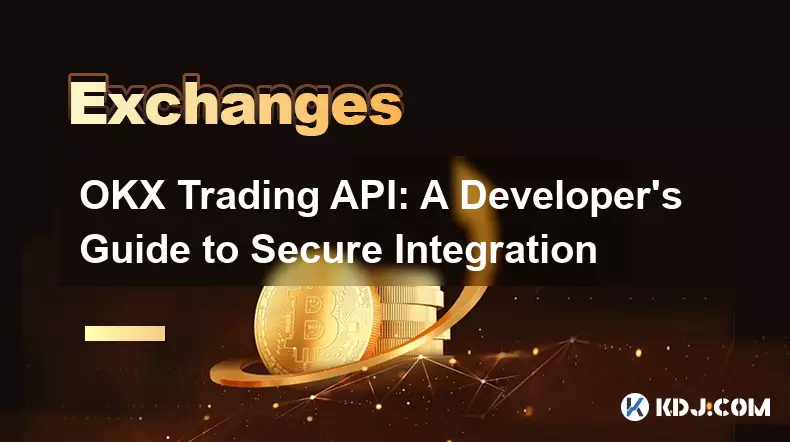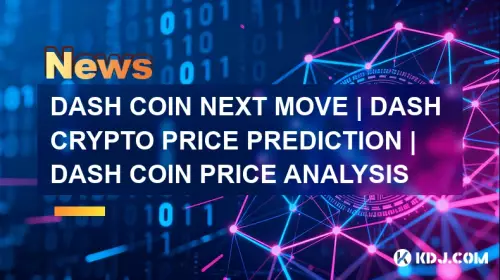-
 bitcoin
bitcoin $107015.826941 USD
-2.18% -
 ethereum
ethereum $3637.352324 USD
-5.18% -
 tether
tether $0.999831 USD
-0.02% -
 xrp
xrp $2.338078 USD
-6.23% -
 bnb
bnb $998.272150 USD
-6.97% -
 solana
solana $167.598257 USD
-10.12% -
 usd-coin
usd-coin $0.999863 USD
0.01% -
 tron
tron $0.282573 USD
-5.09% -
 dogecoin
dogecoin $0.169891 USD
-7.39% -
 cardano
cardano $0.557554 USD
-7.03% -
 hyperliquid
hyperliquid $39.914802 USD
-5.85% -
 chainlink
chainlink $15.414549 USD
-9.97% -
 bitcoin-cash
bitcoin-cash $510.361911 USD
-4.26% -
 ethena-usde
ethena-usde $0.999194 USD
-0.03% -
 stellar
stellar $0.282092 USD
-6.07%
How to use the spot grid trading bot on KuCoin?
KuCoin's spot grid bot automates trading by buying low and selling high within a set price range, profiting from market volatility without requiring constant monitoring.
Oct 29, 2025 at 08:37 pm

Understanding Spot Grid Trading on KuCoin
1. Spot grid trading is a strategy that leverages market volatility by placing buy and sell orders at predetermined price levels within a specified range. On KuCoin, this is automated through the spot grid trading bot, allowing traders to profit from both upward and downward price movements without constant manual monitoring.
2. The bot divides the selected price range into multiple grid levels. When the price drops to a lower grid level, the bot automatically buys the asset. When the price rises to a higher level, it sells the asset, capturing small profits with each cycle.
3. This method works best in markets with moderate volatility where prices fluctuate within a defined range rather than trending strongly in one direction. It is particularly effective for assets like BTC, ETH, and other major cryptocurrencies that exhibit consistent intraday movement.
4. Traders can customize parameters such as the upper and lower price limits, the number of grids, and the investment amount. These settings determine how frequently trades occur and the potential return on investment.
5. The spot grid bot operates 24/7, executing trades based on real-time market data and predefined rules, reducing emotional decision-making and increasing trading efficiency.
Setting Up the Grid Bot on KuCoin
1. Log in to your KuCoin account and navigate to the “Bot” section from the main menu. Select “Spot Grid” to access the setup interface.
2. Choose the trading pair you want to use, such as BTC/USDT or ETH/USDT. Ensure you have sufficient balance in both the base and quote currencies to fund the grid.
3. Define the upper and lower price bounds. These should reflect recent price behavior—set the upper limit above the current price and the lower limit below it, forming a realistic range based on historical data.
4. Specify the number of grid levels. More grids mean smaller price intervals and more frequent trades, while fewer grids result in larger price movements between trades but potentially higher per-trade profits.
5. Enter the total investment amount. KuCoin will allocate funds across the grid, using the quote currency to buy the asset when prices drop and selling it as prices rise. Confirm all settings before activating the bot.
Monitoring and Adjusting Active Grid Bots
1. Once the bot is running, you can view its performance in the “Active Bots” tab. Key metrics include total profit, number of completed trades, grid hit rate, and current holdings.
2. Monitor the price action relative to your grid range. If the market moves significantly beyond the upper or lower bounds, the bot may stop trading until the price re-enters the range.
3. KuCoin provides real-time updates on filled orders and asset distribution across grid levels. Use this data to assess whether adjustments are needed, such as expanding the price range or rebalancing funds.
4. You can modify certain parameters while the bot is active, though some changes may require stopping and restarting the bot. Be cautious when making adjustments during high volatility periods.
5. Regularly review the bot’s performance against market conditions to ensure it remains aligned with your trading goals and risk tolerance.
Risk Management and Best Practices
1. Avoid setting overly narrow price ranges, as this can lead to excessive trading and increased exposure to fees. Similarly, excessively wide ranges may result in infrequent trades and underutilized capital.
2. Use historical price charts to identify support and resistance levels when defining grid boundaries. This increases the likelihood that the price will oscillate within the chosen range.
3. Start with a small investment to test the bot’s performance under different market conditions before scaling up. This helps minimize losses during initial learning phases.
4. Consider pairing the grid bot with stop-loss strategies or combining it with other bots for diversified exposure. KuCoin allows multiple bots to run simultaneously across different pairs.
5. Always keep track of funding rates, trading fees, and tax implications associated with frequent trading activities generated by the grid bot.
Frequently Asked Questions
What happens if the price breaks out of the grid range?If the price moves above the upper limit or below the lower limit, the bot will no longer execute new trades until the price returns within the set range. Positions already filled may remain open, and traders may need to manually adjust the grid or close the bot.
Can I use leverage with the spot grid bot?No, the spot grid bot operates only in spot markets without leverage. For leveraged grid strategies, KuCoin offers a separate futures grid bot designed for margin trading.
How are profits calculated and distributed?Profits come from the difference between buy and sell prices across grid levels. Gains accumulate in the respective trading pair balances and can be withdrawn or reinvested at any time.
Is there a fee for using the grid trading bot?KuCoin does not charge additional fees for using the bot itself. However, standard trading fees apply to every executed order, which vary based on your fee tier and whether you are a maker or taker.
Disclaimer:info@kdj.com
The information provided is not trading advice. kdj.com does not assume any responsibility for any investments made based on the information provided in this article. Cryptocurrencies are highly volatile and it is highly recommended that you invest with caution after thorough research!
If you believe that the content used on this website infringes your copyright, please contact us immediately (info@kdj.com) and we will delete it promptly.
- Red Poppy Coin, Australia: A Collector's Guide to the 2025 Release
- 2025-11-04 11:00:15
- Shiba Inu Gets the Nod: Good News for SHIB Holders!
- 2025-11-04 09:35:12
- PI Faces Scrutiny, LINK Gains, BlockDAG Miner Momentum: A Crypto Triad
- 2025-11-04 09:35:12
- Spare Change, Cash, and Bang for Your Buck: A New Yorker's Guide
- 2025-11-04 11:30:01
- Aster, CZ, and $25M: Decoding the DeFi Drama
- 2025-11-04 11:30:01
- Blazpay: The Next Big Crypto Coin Ready to Explode?
- 2025-11-04 09:00:01
Related knowledge

Common Mistakes to Avoid on OKX: A Guide for New Traders
Nov 04,2025 at 03:37pm
Understanding the Interface Before Trading1. New traders often jump into placing orders without fully exploring the OKX platform layout. Taking time t...

OKX TradingView Integration: A Guide to Advanced Chart Analysis
Nov 02,2025 at 03:37am
OKX and TradingView: Bridging the Gap for Professional Traders1. OKX, one of the leading cryptocurrency exchanges, has integrated with TradingView to ...

OKX Trading API: A Developer's Guide to Secure Integration
Nov 02,2025 at 01:01am
Understanding the OKX Trading API Infrastructure1. The OKX Trading API is built on REST and WebSocket protocols, enabling developers to access real-ti...

Advanced Security Settings on OKX: Beyond Two-Factor Authentication
Nov 04,2025 at 05:25pm
Enhanced Authentication Mechanisms on OKX1. OKX has implemented advanced authentication layers that extend beyond standard two-factor authentication (...

OKX Asset Protection Fund: How It Secures Your Crypto
Nov 02,2025 at 11:19am
Understanding the OKX Asset Protection Fund1. The OKX Asset Protection Fund is a financial reserve designed to safeguard user assets in extreme market...

Linking Your Bank Account to OKX: A Secure Step-by-Step Guide
Nov 02,2025 at 03:19pm
Why Linking Your Bank Account to OKX Matters1. Connecting your bank account to OKX streamlines the process of depositing fiat currency, allowing immed...

Common Mistakes to Avoid on OKX: A Guide for New Traders
Nov 04,2025 at 03:37pm
Understanding the Interface Before Trading1. New traders often jump into placing orders without fully exploring the OKX platform layout. Taking time t...

OKX TradingView Integration: A Guide to Advanced Chart Analysis
Nov 02,2025 at 03:37am
OKX and TradingView: Bridging the Gap for Professional Traders1. OKX, one of the leading cryptocurrency exchanges, has integrated with TradingView to ...

OKX Trading API: A Developer's Guide to Secure Integration
Nov 02,2025 at 01:01am
Understanding the OKX Trading API Infrastructure1. The OKX Trading API is built on REST and WebSocket protocols, enabling developers to access real-ti...

Advanced Security Settings on OKX: Beyond Two-Factor Authentication
Nov 04,2025 at 05:25pm
Enhanced Authentication Mechanisms on OKX1. OKX has implemented advanced authentication layers that extend beyond standard two-factor authentication (...

OKX Asset Protection Fund: How It Secures Your Crypto
Nov 02,2025 at 11:19am
Understanding the OKX Asset Protection Fund1. The OKX Asset Protection Fund is a financial reserve designed to safeguard user assets in extreme market...

Linking Your Bank Account to OKX: A Secure Step-by-Step Guide
Nov 02,2025 at 03:19pm
Why Linking Your Bank Account to OKX Matters1. Connecting your bank account to OKX streamlines the process of depositing fiat currency, allowing immed...
See all articles










































































